Spring Field Semester 2025
Spring Field Semester 2025
Week 14 - Spring Field Semester 2025
by Dallas
This was our final week at Robinson Forest. Monday, we assisted UK graduate student, Eleanor, with her upcoming snake research to observe snake populations and how they are being affected by various fungal diseases. Here we flipped coverboards spread throughout Robinson Forest to capture various snakes. Once captured the snakes were sexed, weighed, measured, marked (either PIT tag or cauterized marking) and then swabbed for possible fungal diseases. We did this at six different locations managing to capture worm snakes, garter snakes and copperhead snakes until we were rained out for the day.
Tuesday, the class drove out to Paul Van Booven Wildlife Management Area. Here we had a quick refresher on chainsaw safety and operations by David, Jordan, and Michael Ammerman. The objective here was to do improvement cuts to improve habit of the area. We built a brush pile to create shelter and hinge cut trees to create browse. As the class did this students were split off to have one on one, hands on instruction to cut down mature trees. At the end of day, we had to say farewell to Robinson Forest for the last time of the semester.
Wednesday, the class met with Dr. Cox at an active wildlife management farm. Here we discussed and were shown various invasive species of plants and ongoing studies on them, Dr. Cox going into particular detail about the Dahurian buckthorn, a possible future problem invasive we will have to deal with. The rest of the day we walked across the farm, attempting to flush bobwhite quail, did listens and visual IDs of various songbirds, and searched for salamanders throughout creeks and ponds on the property. All together a fun and laid back learning day.
Thursday, we met Dr. McNeil at McConnell Springs. We used mist nets to capture song birds who were then collected. Dr. McNeil then showed us how to process the birds via ID species, sexing, wing length measurement, and banding the bird’s leg. Examples of birds caught were White eyed vireo, Gray cat bird, Oven bird, etc. It was a relatively short day as mist netting is most effective in the early morning.

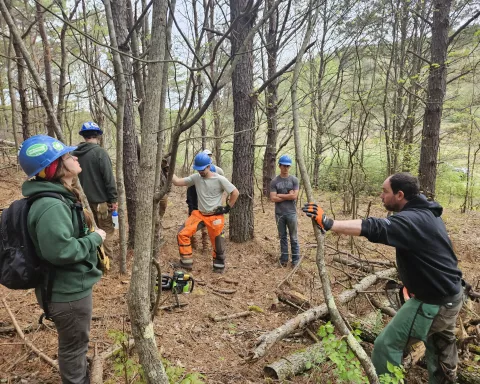
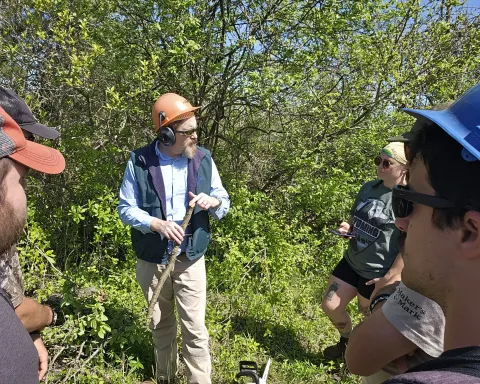

Week 13 - Spring Field Semester 2025
by Leo
As we near the end of the spring semester, with only a week or two left, I find myself reflecting on the great memories made and the endless knowledge gained. During the week of April 14–18, my classmates and I had the opportunity to accompany Dr. Stringer on an educational trip to western Kentucky.
Our journey began on Monday with a visit to Pennyrile State Forest, where we explored some retired logging operations. We were fortunate to be guided by representatives from the Kentucky Division of Forestry, who helped us assess the site and ensure that Best Management Practices (BMPs) were being followed.
On Tuesday, Dr. Stringer gave us an engaging lecture on logging theft and bottomland forestry. These topics tied directly into our afternoon field visit, again in Pennyrile State Forest. Despite the heavy rain the week before, the bottomlands were dry enough for us to explore. This was the first bottomland forest our class had visited, and it was fascinating to compare it to the forests we’ve studied all semester in eastern Kentucky.
Wednesday took us to Bowling Green, where we toured several active logging operations. We observed three different methods in action: Sutton Logging’s cut-to-length technique, Sotto Logging’s manual felling approach, and Bobby Garry’s use of a feller buncher. Each method offered unique insights into the practical aspects of forestry and seeing them in action was an invaluable experience.
Finally, on Thursday, we traveled to Owensboro to tour the Domtar Pulp and Paper Mill. This stop was especially educational, as it gave us a firsthand look at how important the pulp and paper industry is to forestry. Watching the paper-making process in real time was truly eye-opening and a great way to cap off the week.
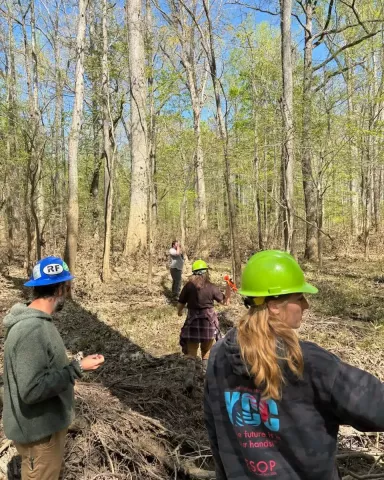
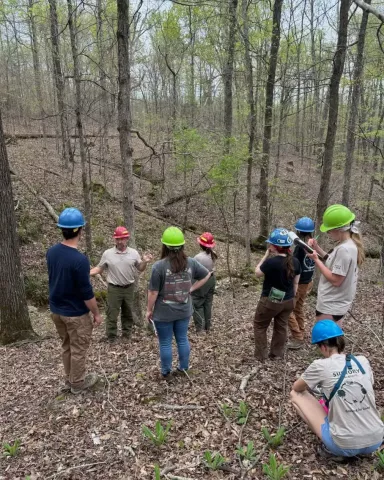
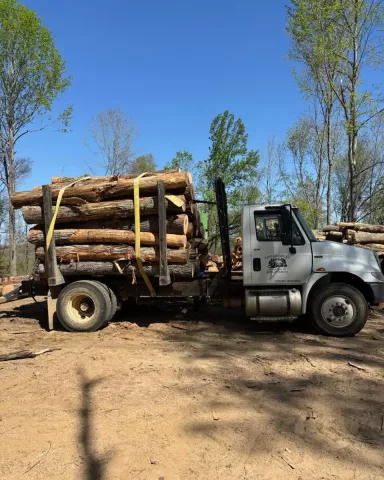
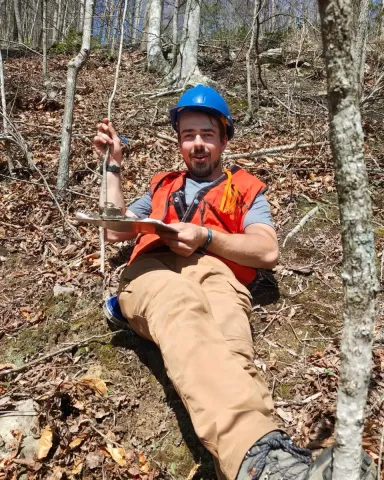
Week 12 - Spring Field Semester 2025
by Delancey
During Week 13 of Spring Field Semester (4/7–4/10), we began fieldwork with Dr. Chris Barton in and around Robinson Forest to assess water quality and quantity in the Falling Rock, Clemons Fork, and Buckhorn Creek watersheds. We measured streamflow, collected water samples, and evaluated stream morphology to assess watershed health. We also documented land use and management practices to help determine stream conditions. Our goal was to establish baseline conditions and develop recommendations for improving watershed health.
On Tuesday, we examined four soil pits along the Boardinghouse Trail in Robinson Forest, each in a different landscape position. At each site, we compared soil horizons, noting differences in color, texture, structure, and depth. These variations reflected the influence of climate, organisms, relief, parent material, and time on soil development. Next we visited the Little Elk mine site in Perry County, KY, to study how soil compaction affects tree growth. Three treatments - ripped, strike-off, and uncompacted - were established in 1997 and planted with native hardwoods; royal paulownia, and white pine.
On Wednesday we explored two Eastern Kentucky watersheds with different land uses, one being in Robinson Forest and the other being a mined valley fill, by measuring water quality, coarse woody debris, macroinvertebrates, salamander diversity, and habitat conditions. Helping Dr. Barton was Andrea Drayer who is the Kentucky River Basin Coordinator for the Kentucky Water Research Institute. Using EPA protocols, we ranked each watershed’s ecological health and identified how land use impacts water quality and overall habitat conditions. Our last day, Thursday, was pretty short - we volunteered at a tree planting on a reclaimed mining site.
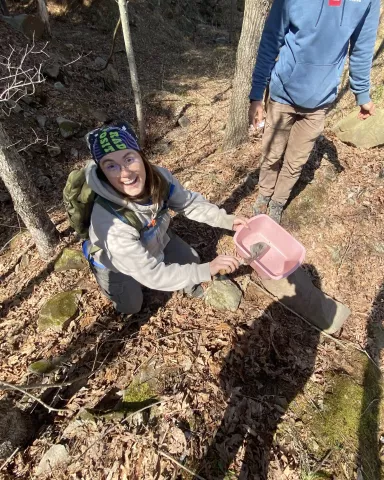
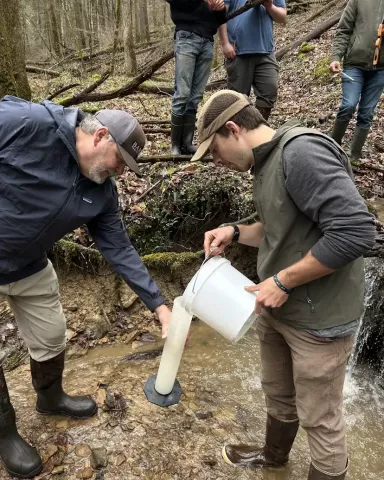

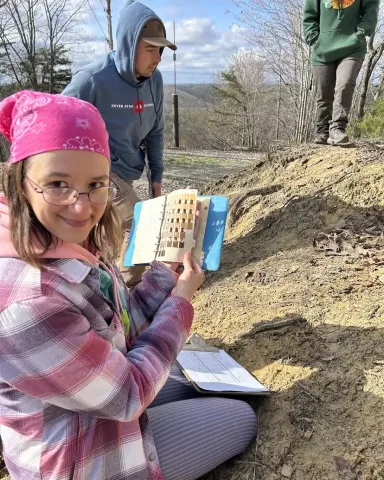
Week 11 - Spring Field Semester 2025
by Alan
On Monday, we arrived at Robinson Forest and met with Dr. Muller in the classroom that afternoon. We discussed the Final Inventory Project and reviewed various forest inventory methods, including techniques for sampling forest composition and establishing plots. We learned that the entire week would be dedicated to this single assignment, which involved collecting data from 22 plots across the Boardinghouse watershed to generate an accurate assessment of the forest's condition.
The class was divided into small groups of 3–4 students to carry out the fieldwork. The goal of the project was to simulate conducting a forest inventory for a landowner. At each plot, we collected data on tree species, diameter at breast height (DBH), merchantable height, percent cull, and tree grade.
The following morning, we met to receive our assigned plots. After loading into the vans, we were dropped off at the top of the watershed and began our data collection. Each plot took roughly 30 to 45 minutes to complete and was spaced 208 feet apart—equivalent to one acre. We were able to complete 11 plots on the first day, working from 9 a.m. to 4 p.m., and finished the remaining 11 plots the next day in the same timeframe. We left the forest on Wednesday evening because we were done collecting the data and we did not need to be at the forest to do the calculations.
From the data we gathered, a variety of insights could be extrapolated. For example, we could determine species composition and relative abundance, estimate total timber volume, assess overall forest health, and evaluate the commercial value of the stand. The information could also be used to create management plans, regeneration needs, and identify areas suitable for thinning or harvest.
Forest inventory is important for forestry students because it forms the foundation for nearly every forest management decision: working in timber sales, wildlife habitat management, or landowner advising.
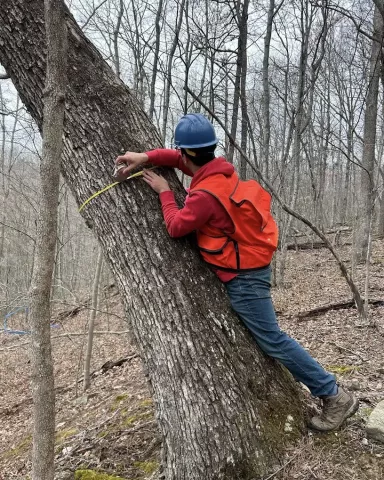
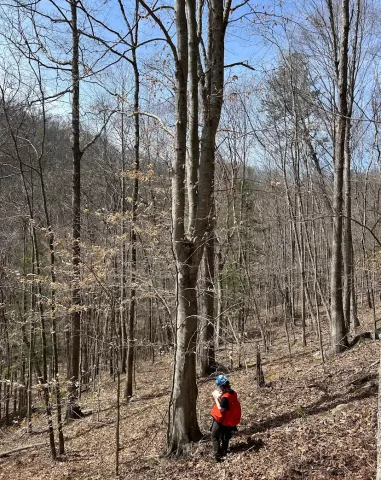
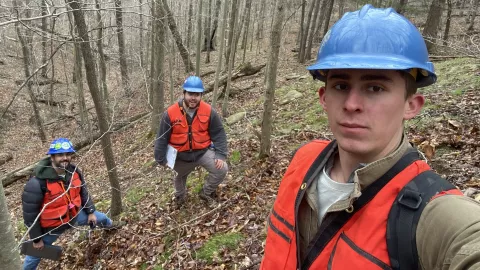
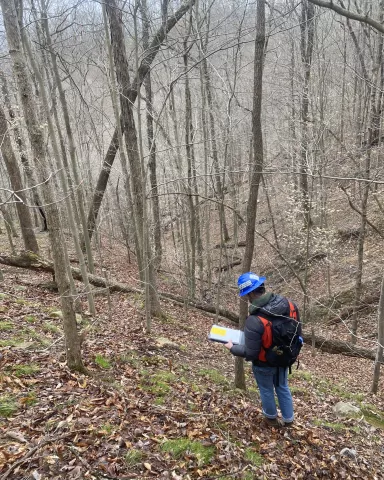
Week 10 - Spring Field Semester 2025
By Dallas
From March 24-28, Dr. Springer taught us Wildlife Assessment at Robinson Forest, Bluegrass Army Depot, Grayson Wildlife Management Area (WMA), and the Salato Wildlife Education Center. We began on Monday at Robinson Forest where we had an extended review session, read scientific journals, and applied this knowledge by brainstorming our own experiments on deer browse. Tuesday, we traveled to Grayson to visit a WMA to examine the current management of the forest for wildlife and met with three wildlife foresters about these activities. They showed us the angle of managing forests in order to promote wildlife instead of lumber. Wednesday, we traveled around Robinson Forest identifying various animal signs to estimate animal presence and density, such as tracks, markings, and tried to observe salamanders under cover boards. Thursday we traveled to the Bluegrass Army Depot to participate in a controlled burn. We learned how to do a controlled burn and spoke with various participants about their experiences and saw how a burn is successfully managed in all its steps. Finally on Friday, we went to Salato Wildlife Education Center where we toured the grounds and saw firsthand the public outreach works for people in our field.

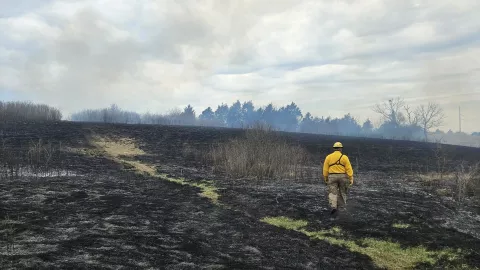
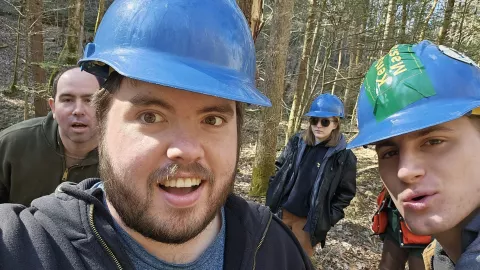
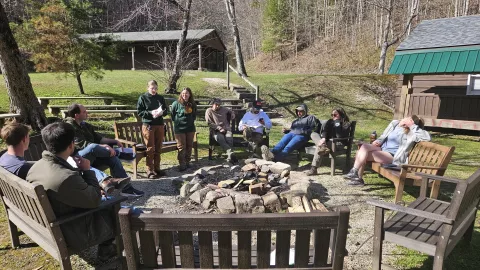
Week 9 - Spring Field Semester 2025
by Drew
For Week 9 of the 2025 UK Forestry Field Semester, Dr. Jeff Stringer instructed students in the fundamentals of Forest Operations, with assistance from Mr. John Reinstetle, Mr. Michael Ammerman, and Mr. Charlie Saunders. The course took place from Monday to Friday, the week of March 10. The bulk of this instruction took place at UK’s Robinson Forest in Clayhole, Breathitt County, Kentucky and included a day-trip to the Kentucky Department of Forestry’s tree nursery, located in Morgan County, Kentucky.
Monday March 10th began with students spending the morning learning the basics of safe and effective chainsaw operation with Mr. Reinstetle, followed by a trip out in the field to get hands-on with saws themselves. On Tuesday, students took a trip to the KDF tree nursery in Morgan County where Mr. Charlie Saunders gave them a tour of the operation and educated them about the production of vigorous tree seedlings. On Wednesday, students spent the morning learning about herbicide application in forestry and went out into the field in the afternoon to try their hands at hack-and-squirt and basal-bark treatments. Thursday consisted of a classroom session where students were given an introduction to BMP’s – or Best Management Practices – as they relate to “timber harvest” or logging operations, followed by an afternoon in the field at Robinson Forest, where Dr. Stringer led students on a hike down a retired skid trail, used to demonstrate a variety of water control structures. The week wrapped up on Friday, students spent the morning touring the site of the Streamside Management Zone – or SMZ – study, where Dr. Stringer educated students about how the study was used to develop the BMP’s they had learned the previous day, before heading home for Spring Break.
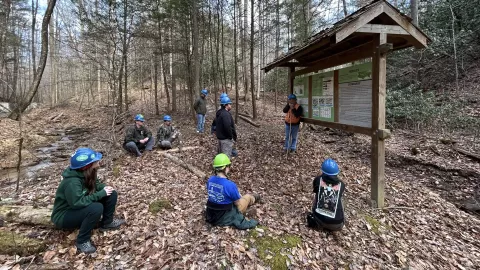
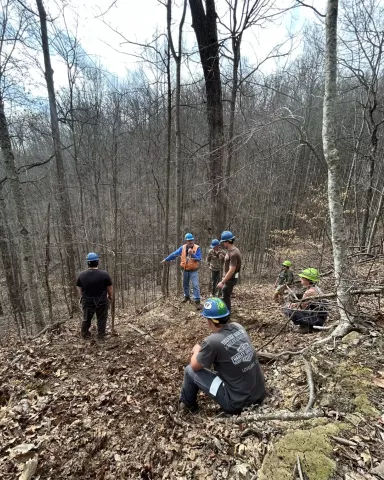
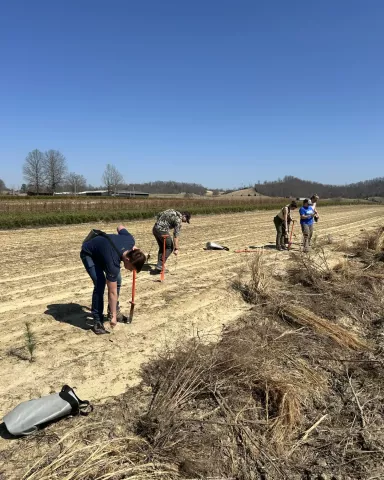
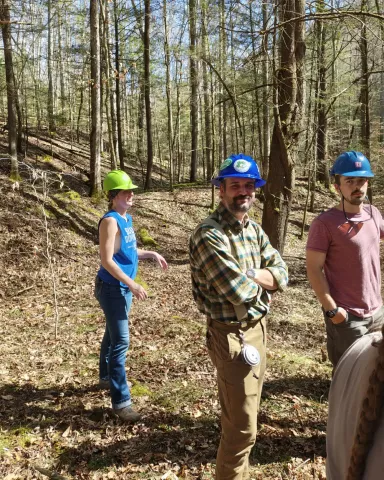
Week 8 - Spring Field Semester 2025
by Ethan
During the first week of March, we went over silviculture practices and principles with Dr. John Lhotka in Robinson Forest, where we observed how different treatments improve the quality of forest health and production. We began by touring old clearcut and release sites, demonstrating how different treatments can affect species volume and the value of sawtimber. We then toured Bucklick and Old Cove Hollows where we learned that different sites in the Cumberland Plateau promote the growth of specific tree species. We also took data on two white oak dominated stands to evaluate how effective crop-tree release is in the promotion of the growth of future mature white oak.
The next day, Dr. Lhotka took us to a white oak stand and instructed us on how to mark a stand for thinning to achieve a specified stocking level. This exercise provided a grasp on the importance of how to select trees from removal to avoid over or under harvesting. On the final day, we gathered data on a mixed pine stand and a white oak dominated stand. We took prism plots and gathered regeneration information on both sites and created a prescription on how to improve growth of desired species for each stand. After presenting our prescriptions to Dr. Lhotka, we received feedback on our plans. This week allowed us as a class to understand how different landscapes and specific species must be treated differently when developing a treatment for proper forest health and productivity.
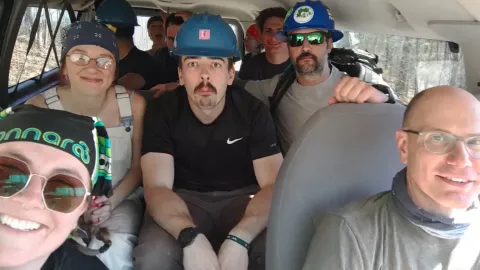
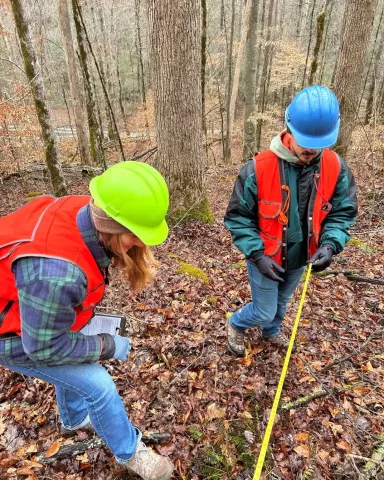
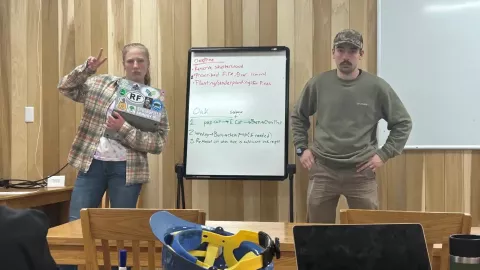
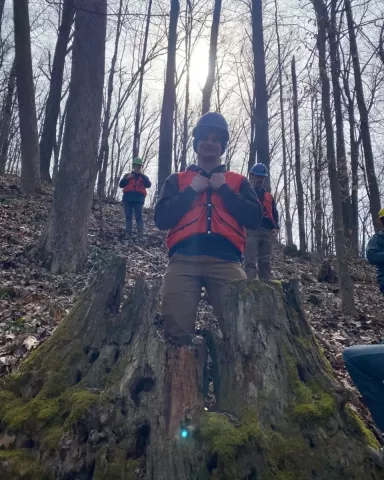
Week 6 and 7 - Spring Field Semester 2025
by Amber
The weeks of February 17-27, Chad Niman guided us in the full process of turning a tree into a finished product. With the help of John Reinstetle and the crew at Robinson Forest, we began by felling a dying white oak, discussing its lean, the best direction for felling, and techniques to minimize damage. After the tree was on the ground, we sawed the logs into lumber, selecting cuts to maximize usable wood. Once cut, we graded the boards based on quality and stacked them in preparation for kiln drying.
In addition to processing the newly felled tree, we worked alongside John Marcum with wood provided by the previous cohort to build tables. This allowed us to see how harvested lumber transitions from raw material to a finished product. Through this process, we observed the entire supply chain starting with the tree in the forest, moving through cutting, grading, drying, and finally into functional furniture. This hands-on experience gave us insight into the various steps involved in producing usable wood products from a harvested tree.
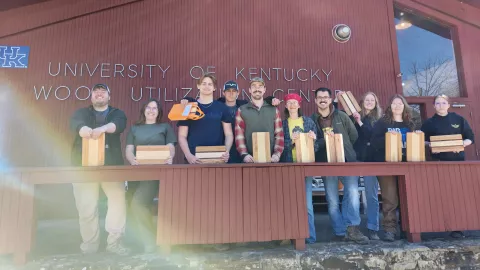
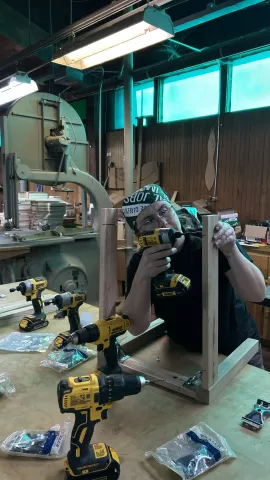
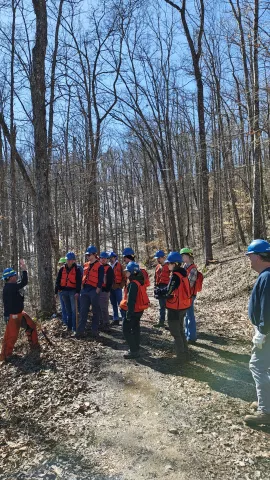
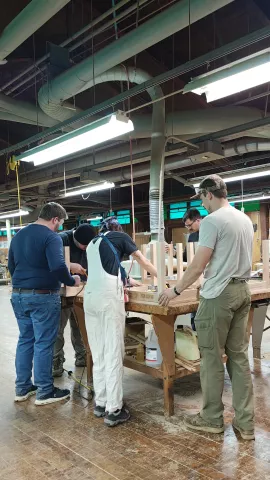
Week 5 - Spring Field Semester 2025
by Tobias
In early February, the class went to Robinson Forest with Dr. Muller for training in statistics and measurements. The objective was to understand how to take good measurements for the purpose of robust sampling to create a strong statistical understanding of the forest as well as how to inventory a forest. First, the class reviewed what it means to have a robust statistical model. Then we reviewed the methods of good, accurate measurements. Once this was done, we then broke into several groups to review tree grading around the camp at Robinson Forest. We discussed our tree grades and why we decided on these tree grades.
We then gathered into two groups and went to continuous forest inventory (CFI) plots in the forest to take measurements on these plots to practice these skills. These measurements were then used as samples by the groups as a sort of competition to see who applied the skills the best, since the CFI plots are continuously monitored we could compare our results of our measurements. Dr. Muller then took us up to a part of Robinson Forest that had been planted as a pine plantation to take similar measurements. This time, he divided the class into three groups and had us set up our own sampling method and plot layout to practice establishing good methods for sampling in forest inventorying and timber cruising.
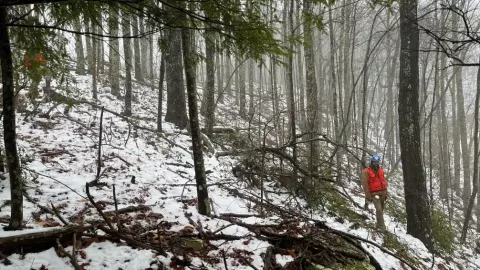
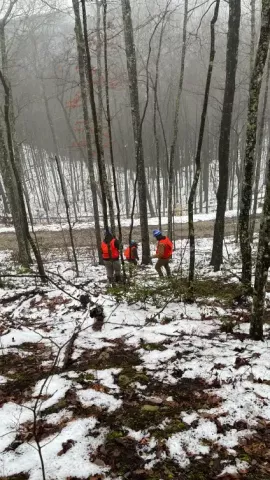
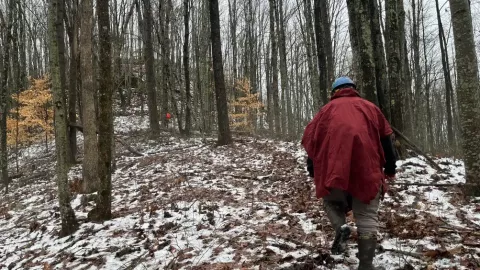
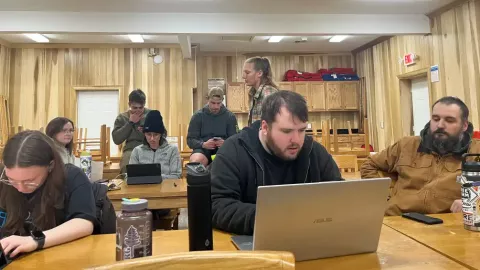
Week 3 and 4 - Spring Field Semester 2025
by Abby
During the third and fourth weeks of the spring field semester, we learned about silvicultural practices with Dr. John Lhotka from January 27 to February 7. Our class also participated in American Tree Farm (ATFS) training on Jan. 28, which Bob Bauer and Doug McLaren instructed. Project Learning Tree (PLT) training was held on Feb. 4 and Laurie Thomas, Doug McLaren, and Pony Meyer instructed. Throughout the silvicultural practices course, our class refreshed our knowledge of forest disturbances, site-species relationships, even-aged methods, and regeneration throughout various locations: Berea College Forest, Daniel Boone National Forest (Berea District), and Daniel Boone National Forest (London District). ATFS Training took place at the Thomas Poe Cooper Building, Lexington, where we became certified ATFS inspectors to acknowledge and help landowners manage their land through the eight Standards of Sustainability. PLT took place at Raven Run Nature Sanctuary where we became certified to teach PLT.
Throughout the two weeks of silvicultural practices, students participated in groups to complete field exercises that applied our knowledge of the science and art of silviculture to conduct stand delineation, prescribing stand management plans, regeneration prescriptions, and thinning operations to forest stands in various sites. These field exercises are important to learn as a forestry major because they expand our understanding of how to properly use certain equipment to plan out silvicultural prescriptions in addition to helping us understand our forests more and the potential outcomes of silvicultural prescriptions. These exercises help prepare us for a career in forestry by providing knowledge on how to apply silvicultural methods to help landowners sustainably manage their land.
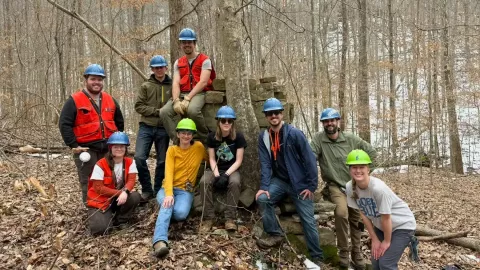
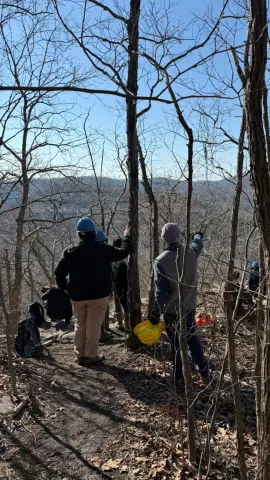
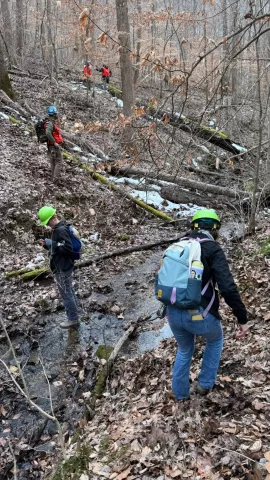
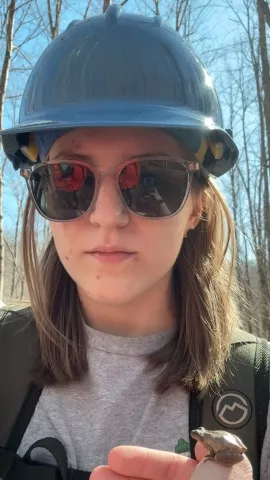
Week 2 - Spring Field Semester 2025
by Sharon
The second week of field semester we did our industry tours and went to a Kentucky-Tennessee Society of American Foresters (KTSAF) meeting. Our instructor Chad Niman took us to the tours and meetings. We started our tour at Kentucky Hardwood Lumber Company in Somerset, KY on Tuesday. They make a variety of board sizes for railroad tie, fencing posts, and many more products. The second stop on Tuesday was at Somerset Pellet Fuel where they turn sawdust bought from mills into pellets that can be burned for warmth. This was a great way to deal with the sawdust waste from cutting wood. The last place we visited on Tuesday was Merrick Hardwood Flooring in Burnside, KY. They process logs into raw hardwood flooring. During the tours, I learned how much technology actually goes into running facilities like this.
On Wednesday, our first stop was at Robinson Stave and Cumberland Cooperage. They make staves and build bourbon barrels. After that, we visited Stidham Cabinet Inc. in Corbin, KY. They make finished cabinets from a variety of wood. Our third stop was at Sauter Timber LLC in Rockwood, TN. They make wood beams, mass timber, and do traditional joinery.
On Thursday, the KTSAF meeting started in the morning. Multiple speakers talked about different techniques for oak regeneration. Someone spoke about hardwood sales worldwide and the challenges that come with it. In addition, a speaker from John Deere spoke about the equipment they offer for loggers. On Friday, we had a panel of speaker we could ask questions about their experiences. Talking to people who work in the forest industry at KTASF and the industry tours was very helpful.
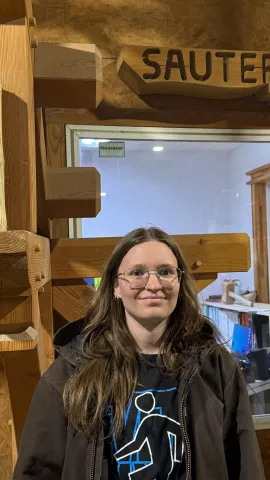
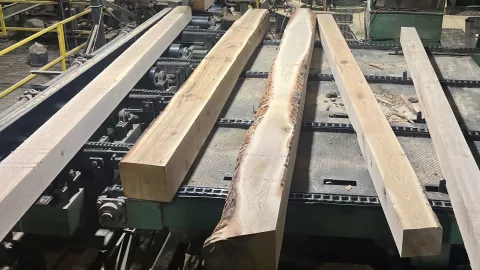
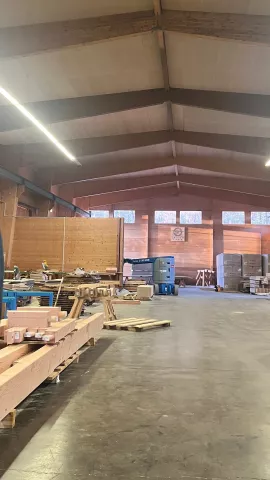
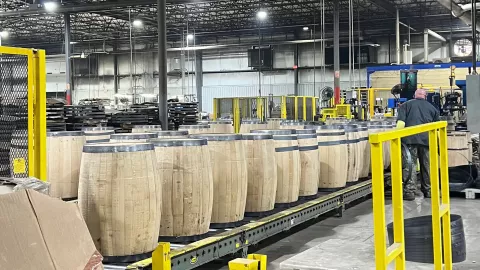
Week 1 - Spring Field Semester 2025
by Anna
For the first week of spring field semester, we learned winter dendrology with Zach Hackworth. The group of students I attended the course with included Amber, Dallas, Tobias, and many others. The course was from January 13th to January 17th, with the second half of every day being spent outside identifying trees. On Monday we reviewed tree identification techniques, specifically looking at types of bark and buds, as there are no leaves on trees (typically) in the winter. We then attended 5 field trips throughout the week to various locations: the UK Arboretum, UK’s campus, the Ashland Estate, and Berea. We took 3 daily quizzes, learned around 76 different tree and liana species, and took our final test at the Arboretum on Friday.
Throughout the week students reviewed common names, Latin names, and families of each species, as well as identifying characteristics. We completed field notebooks to help us retain important information about buds, twigs, growth forms, preferred sites, and more. The winter dendrology activities were important to learn as a forestry student because tree identification is a necessary tool for applying any type of forestry knowledge. For example, if you are helping a landowner understand their forest composition to apply a silviculture prescription, you must know the difference between a black walnut and a sugar maple. Winter dendrology has prepared me to be a forester by helping me refresh my knowledge from our first fall dendrology course, and how to distinguish species via bark, buds, and site type compared to leaves.
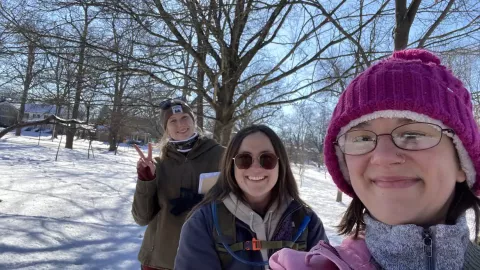
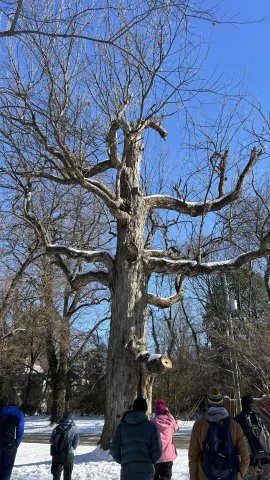
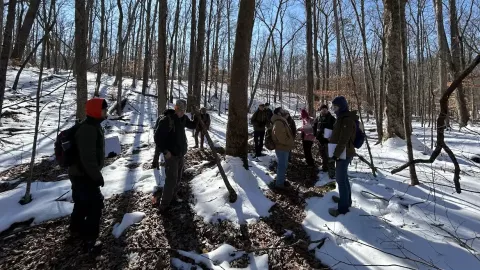
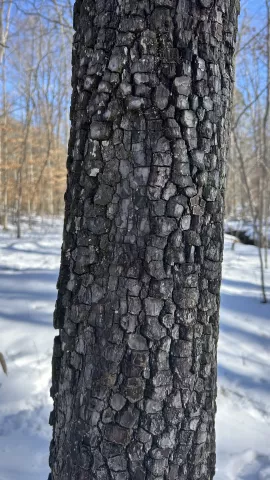
Questions?
For questions or additional information on the undergraduate forestry program, contact Laura Robinson, Forestry Academic Coordinator at 859-257-8718 or L.Robinson@uky.edu. Also, email Laura if you would like to arrange an in-person visit or a Zoom meeting. Let us know how we can help!
Email Laura Robinson